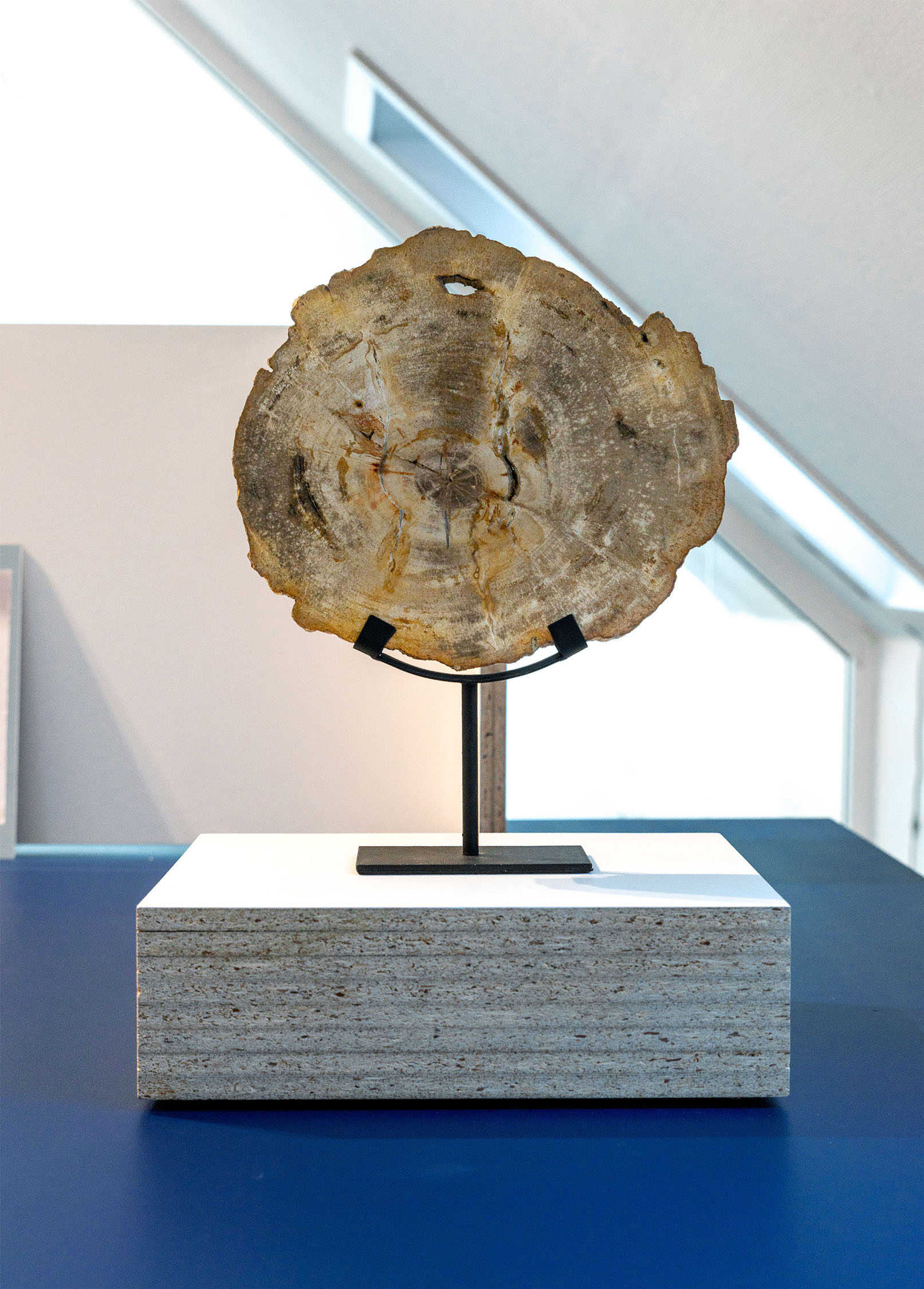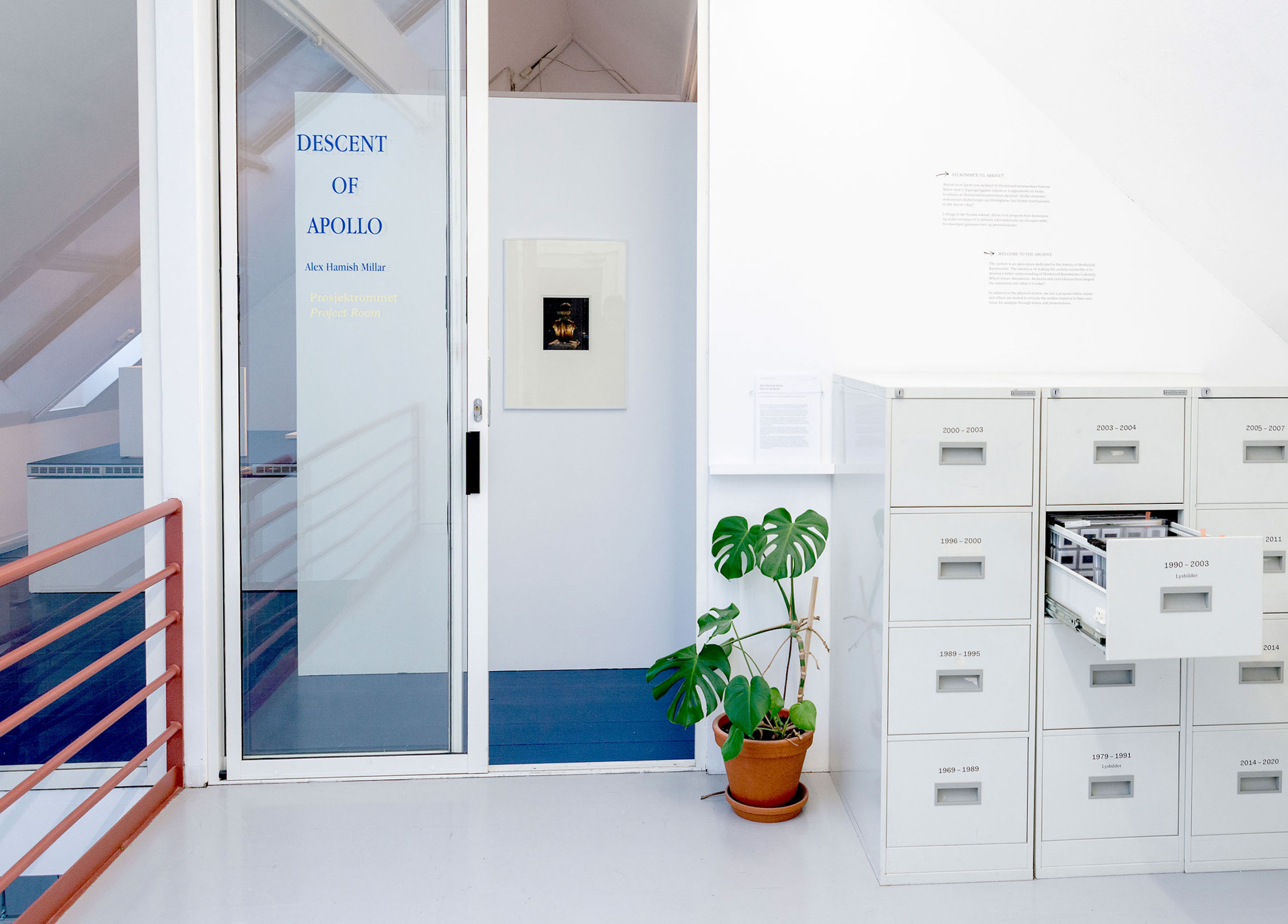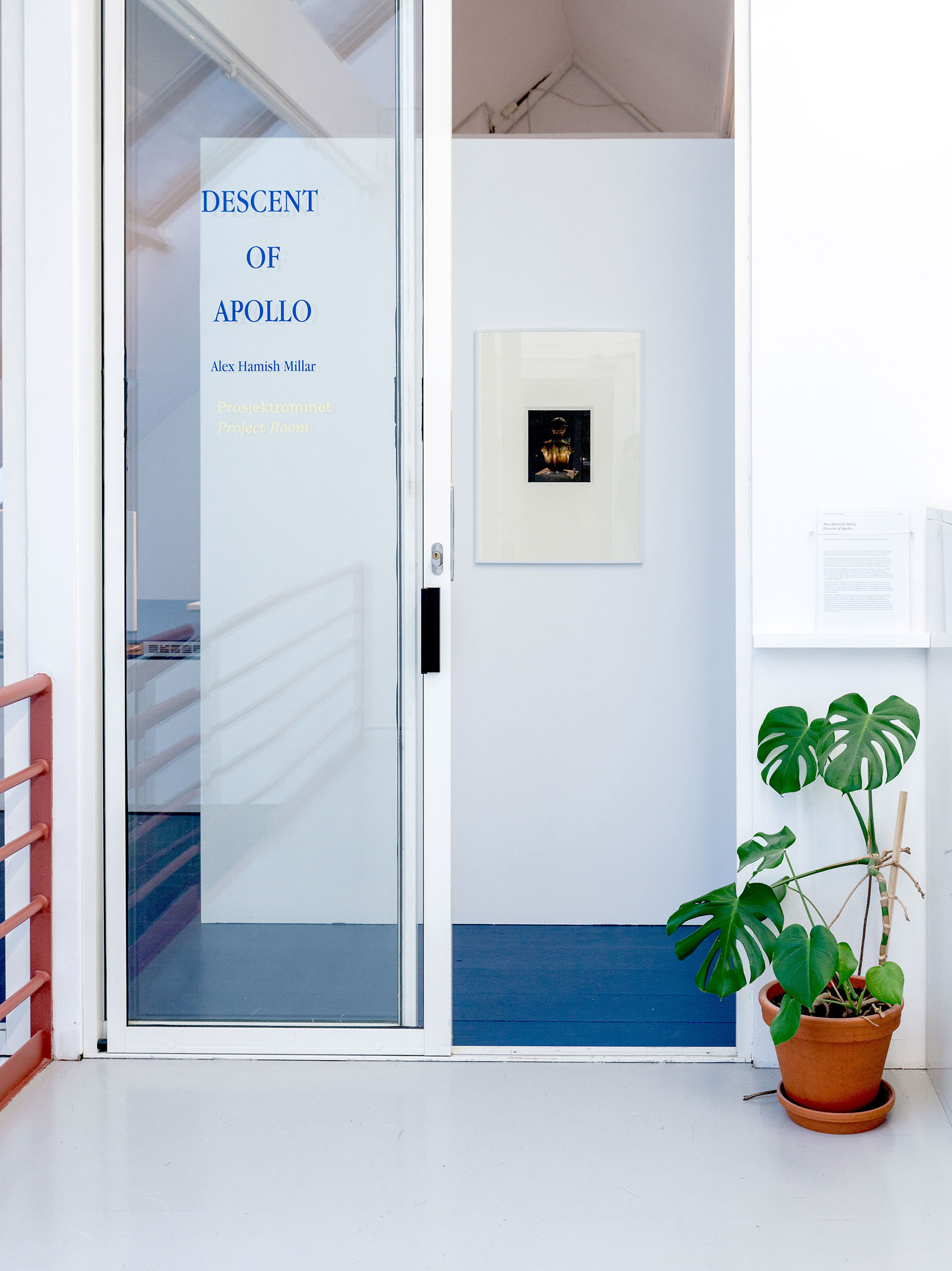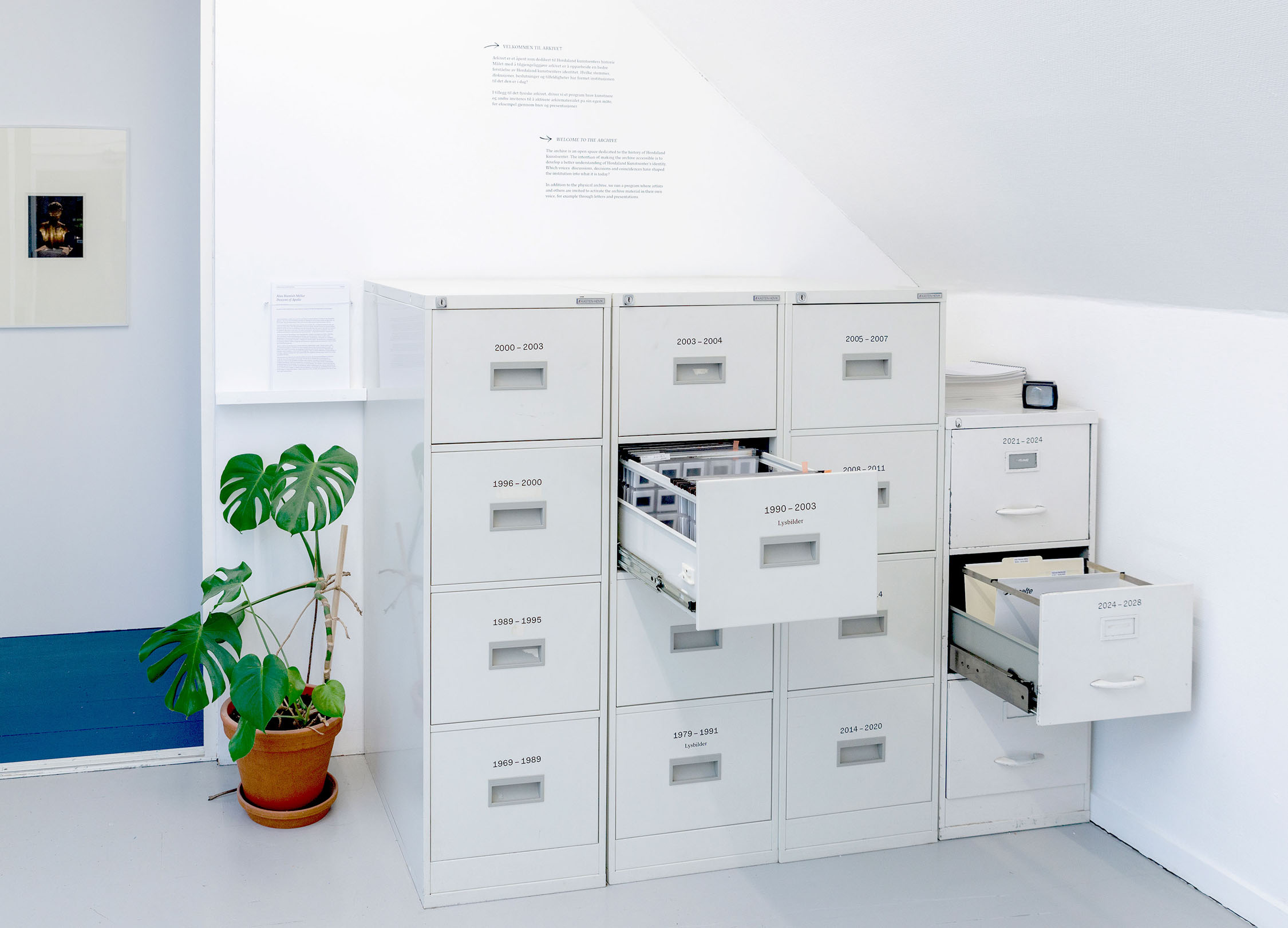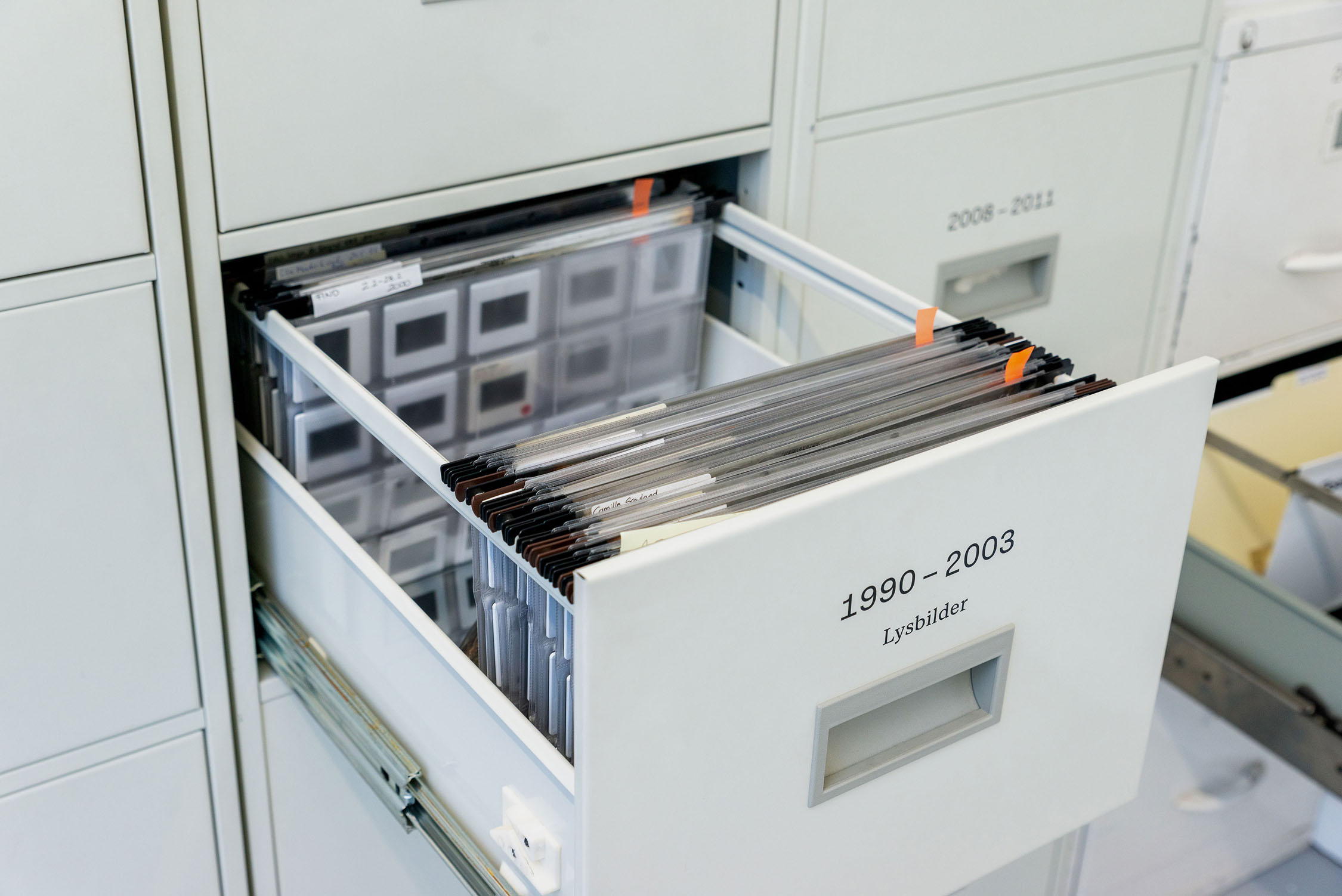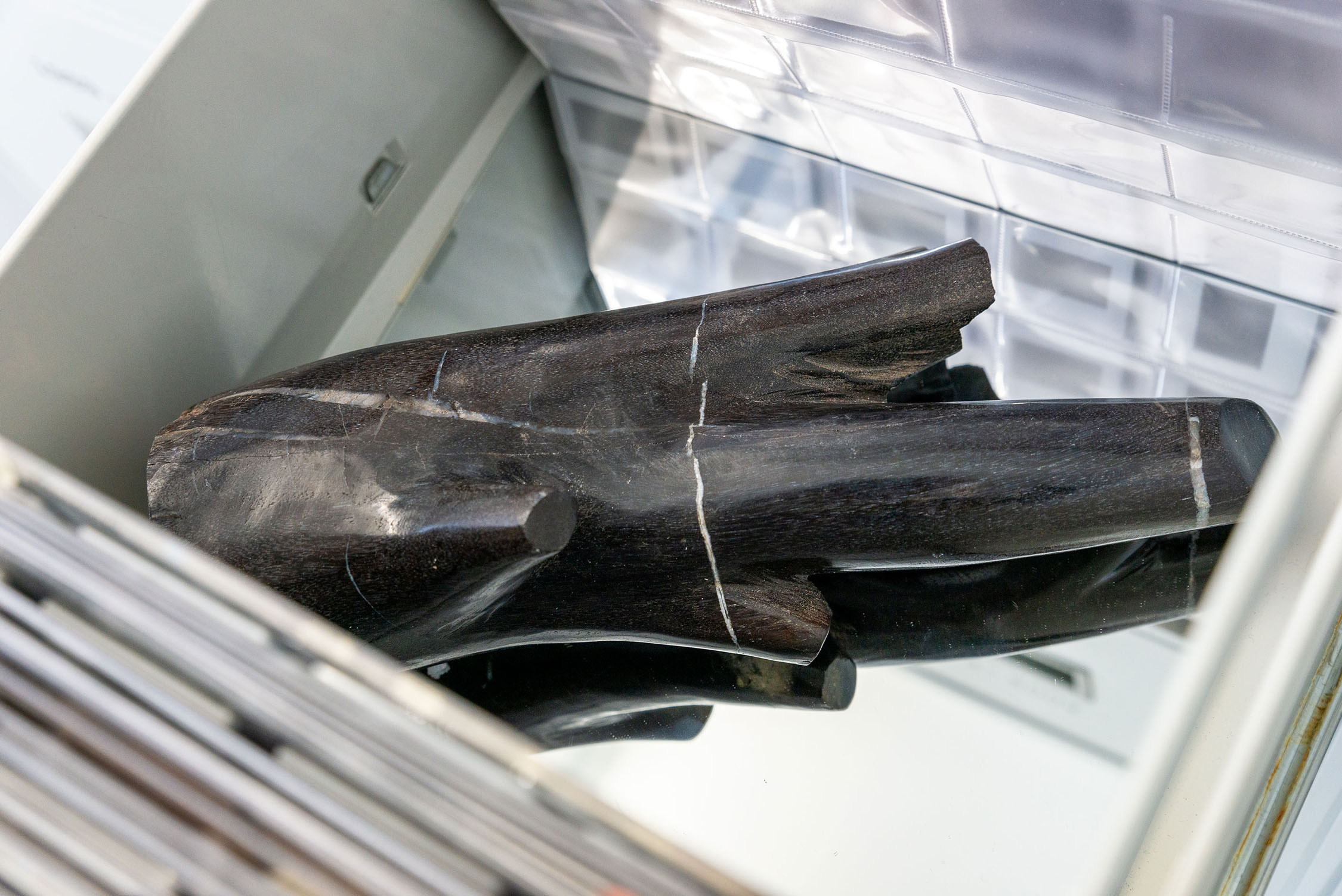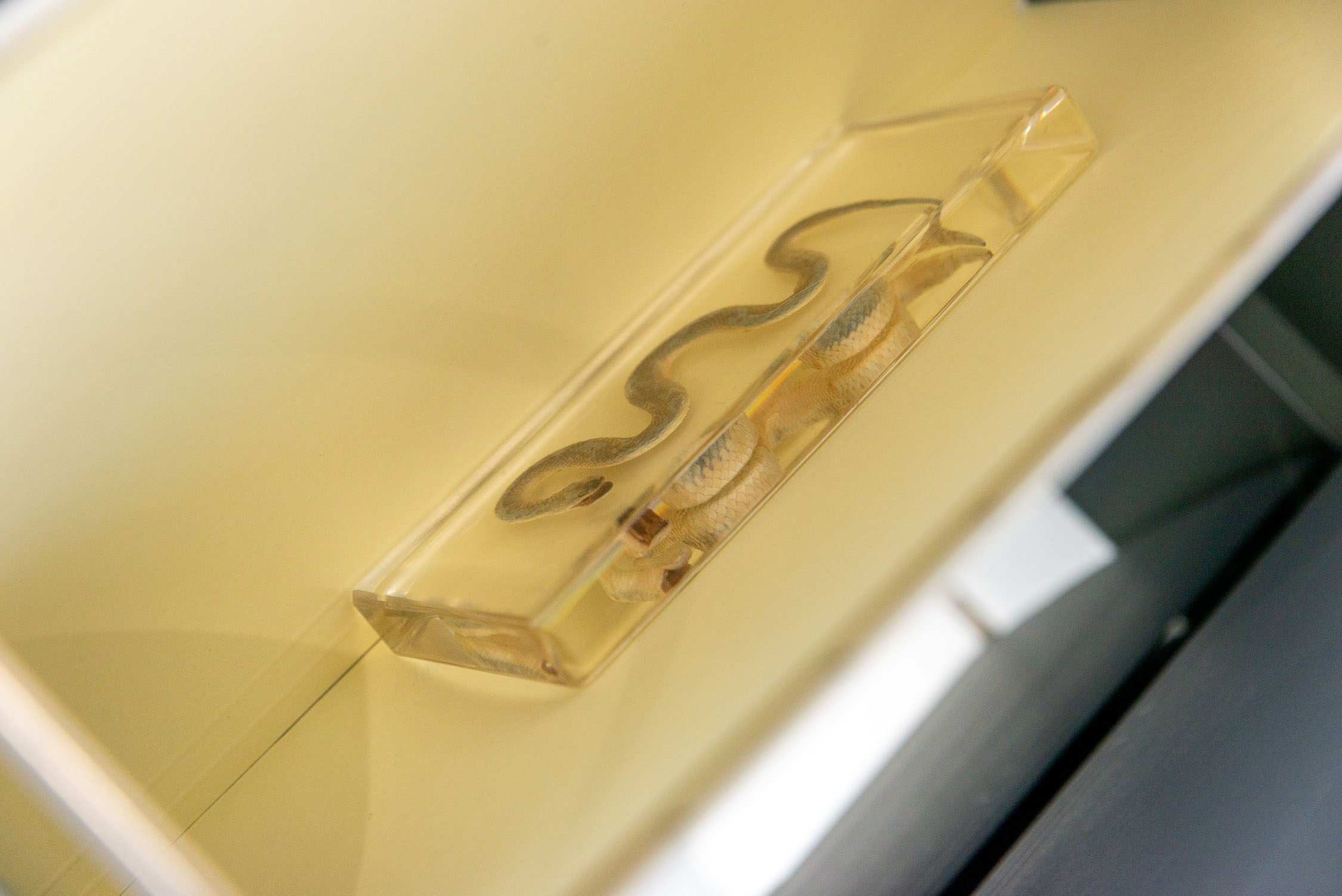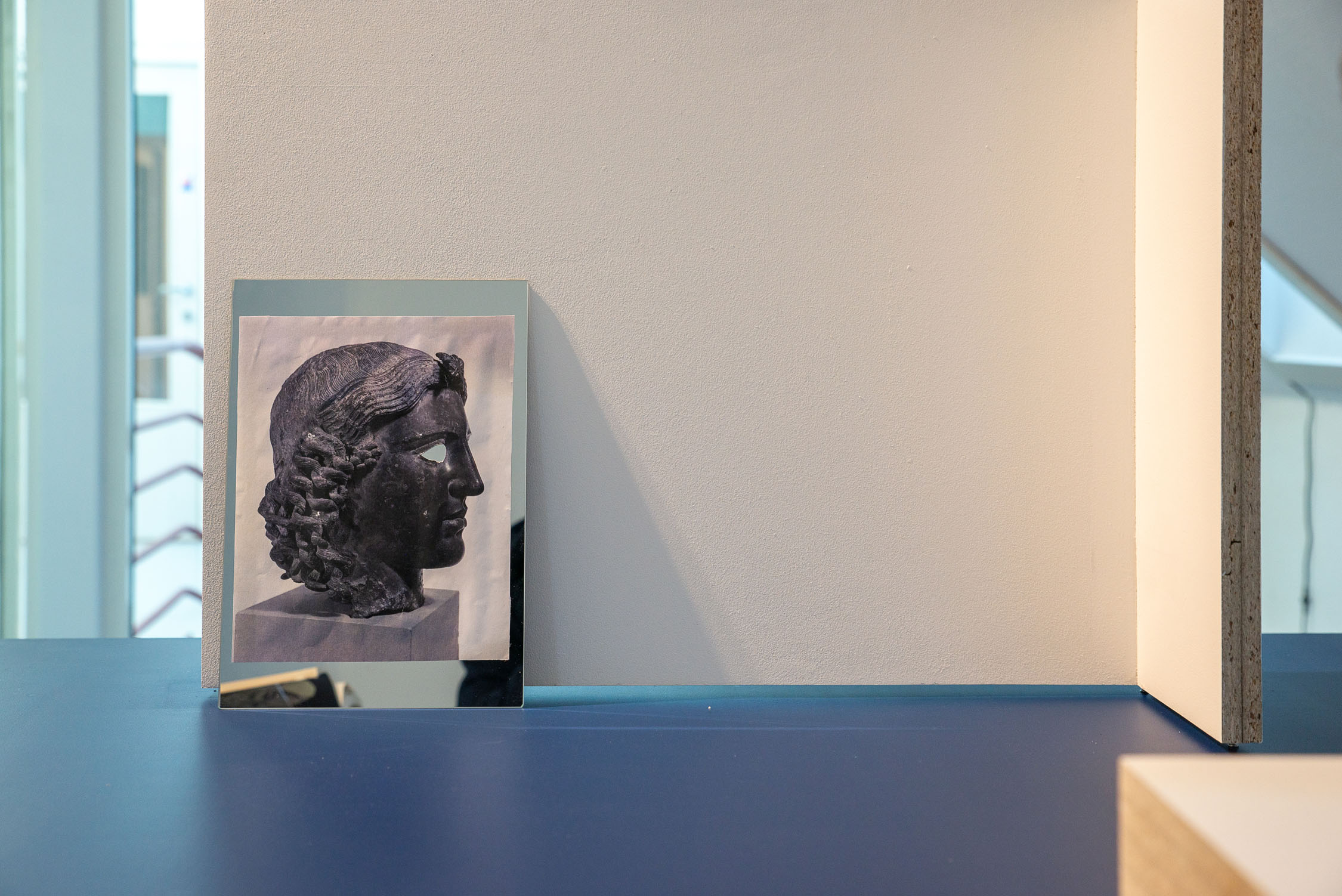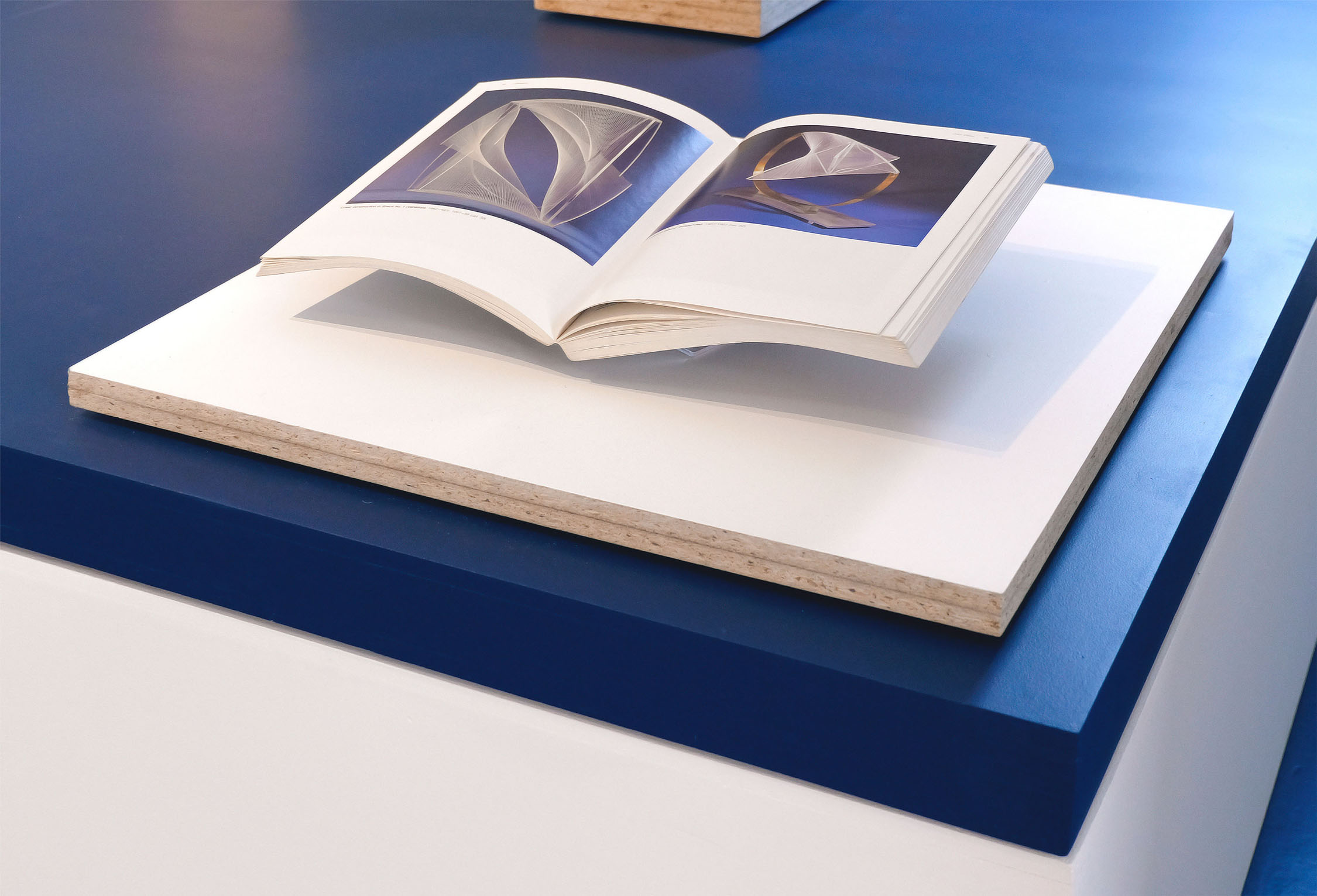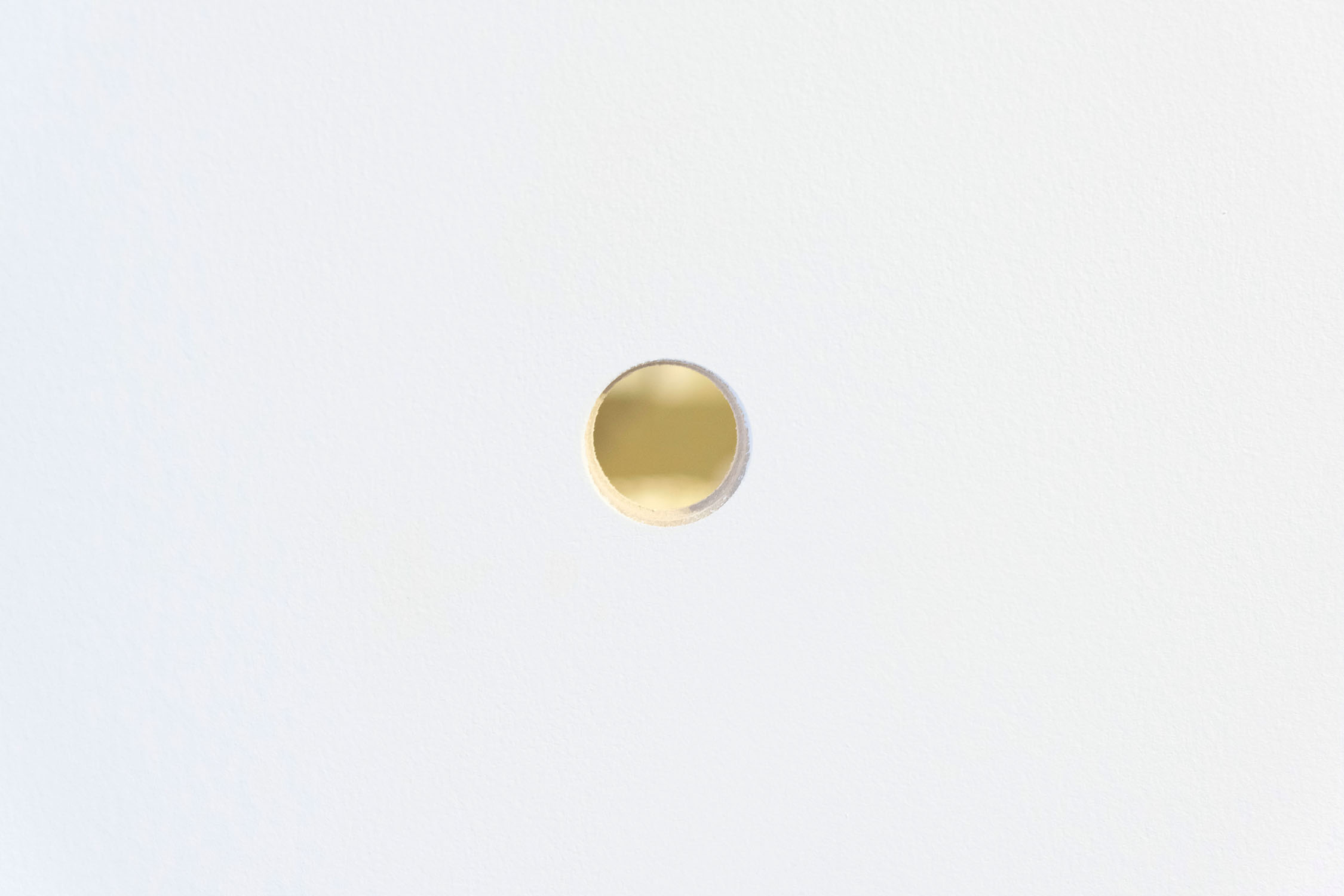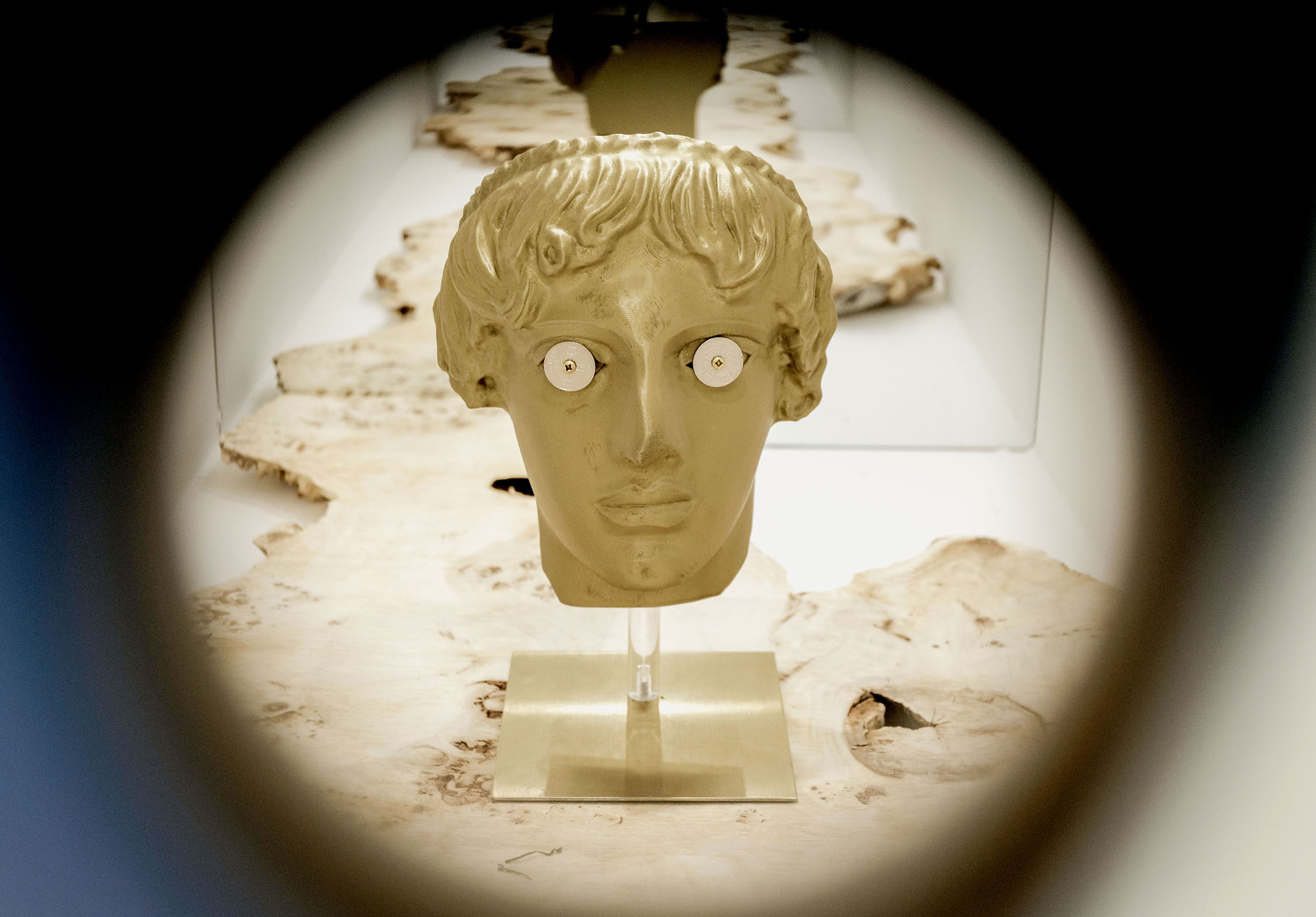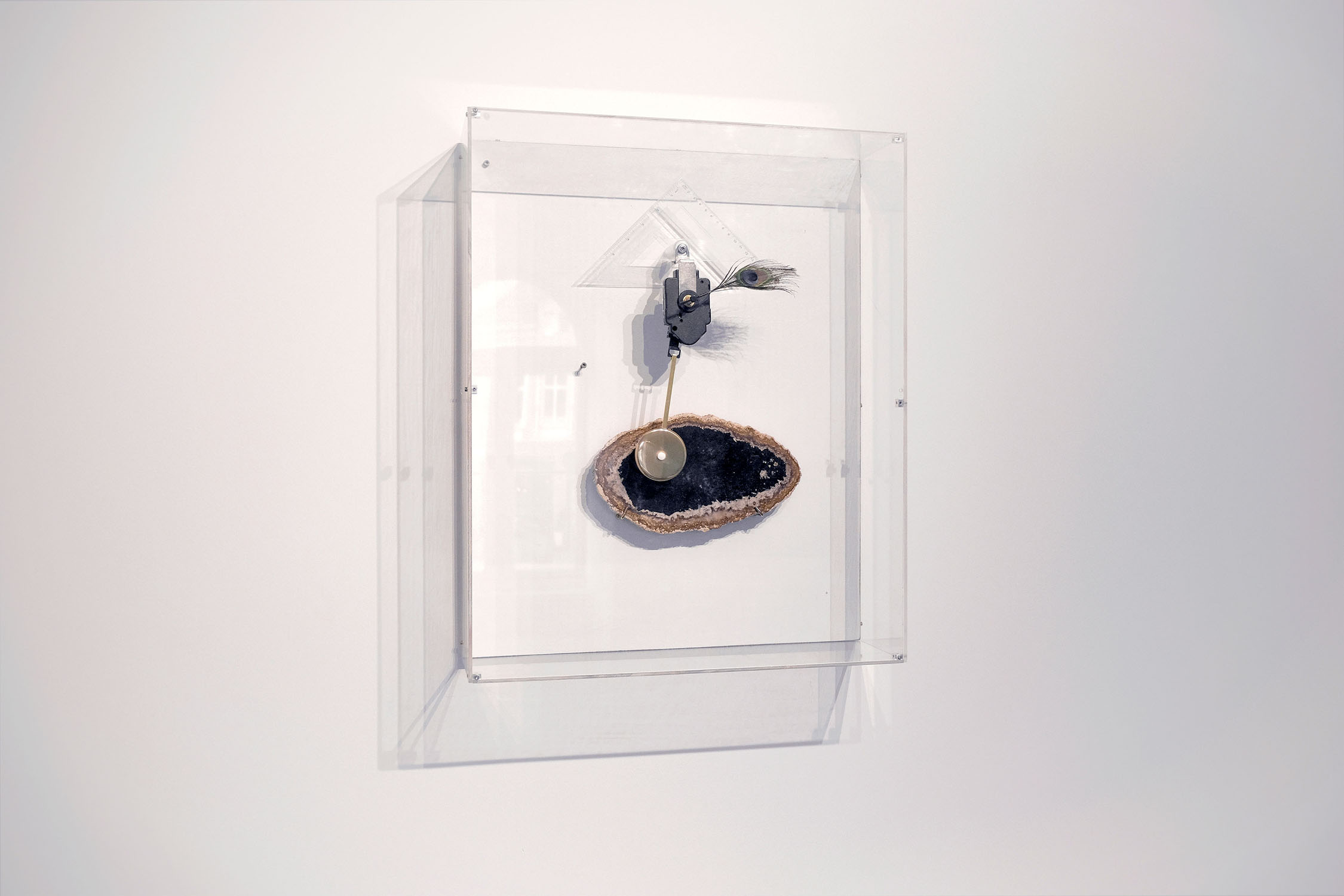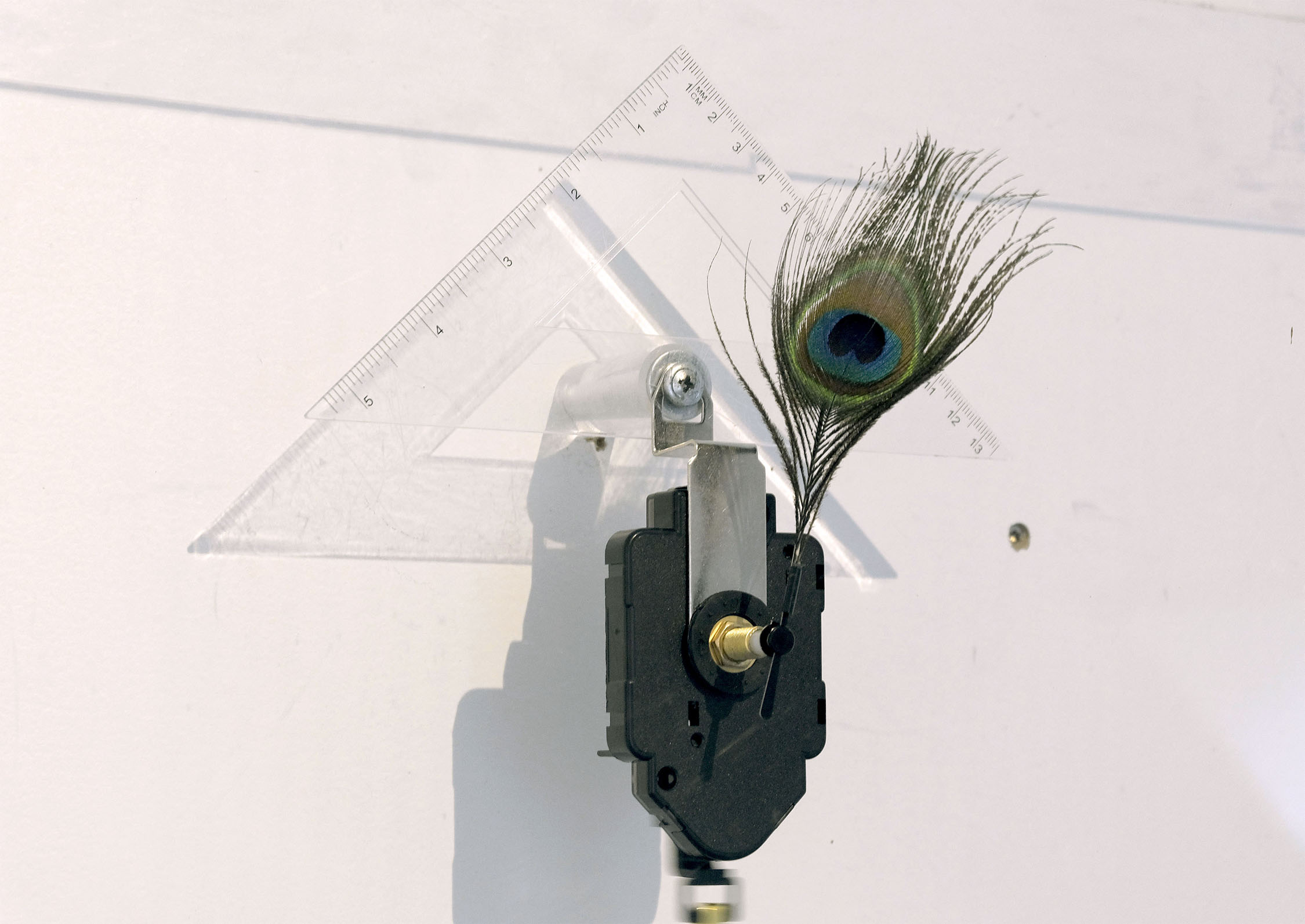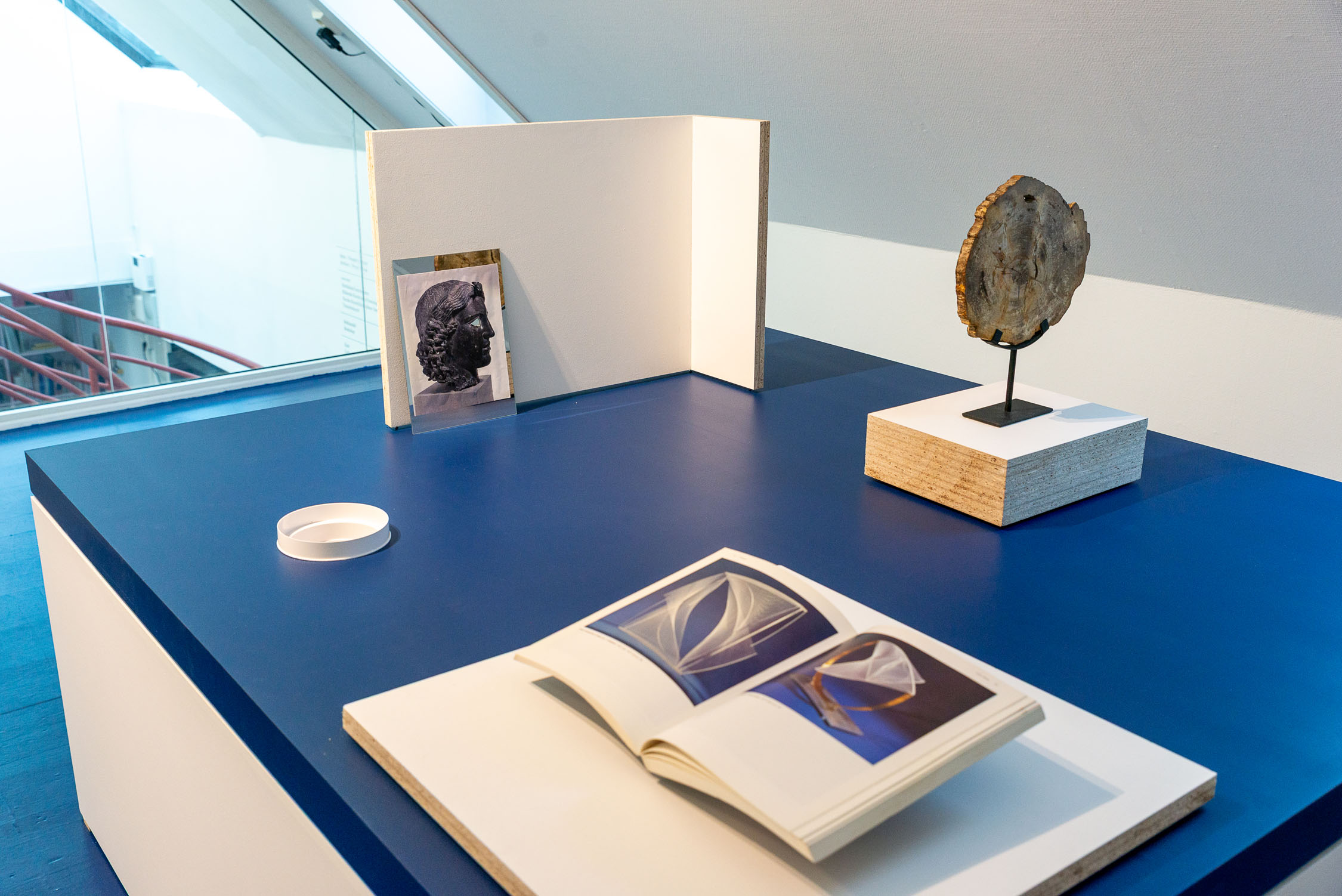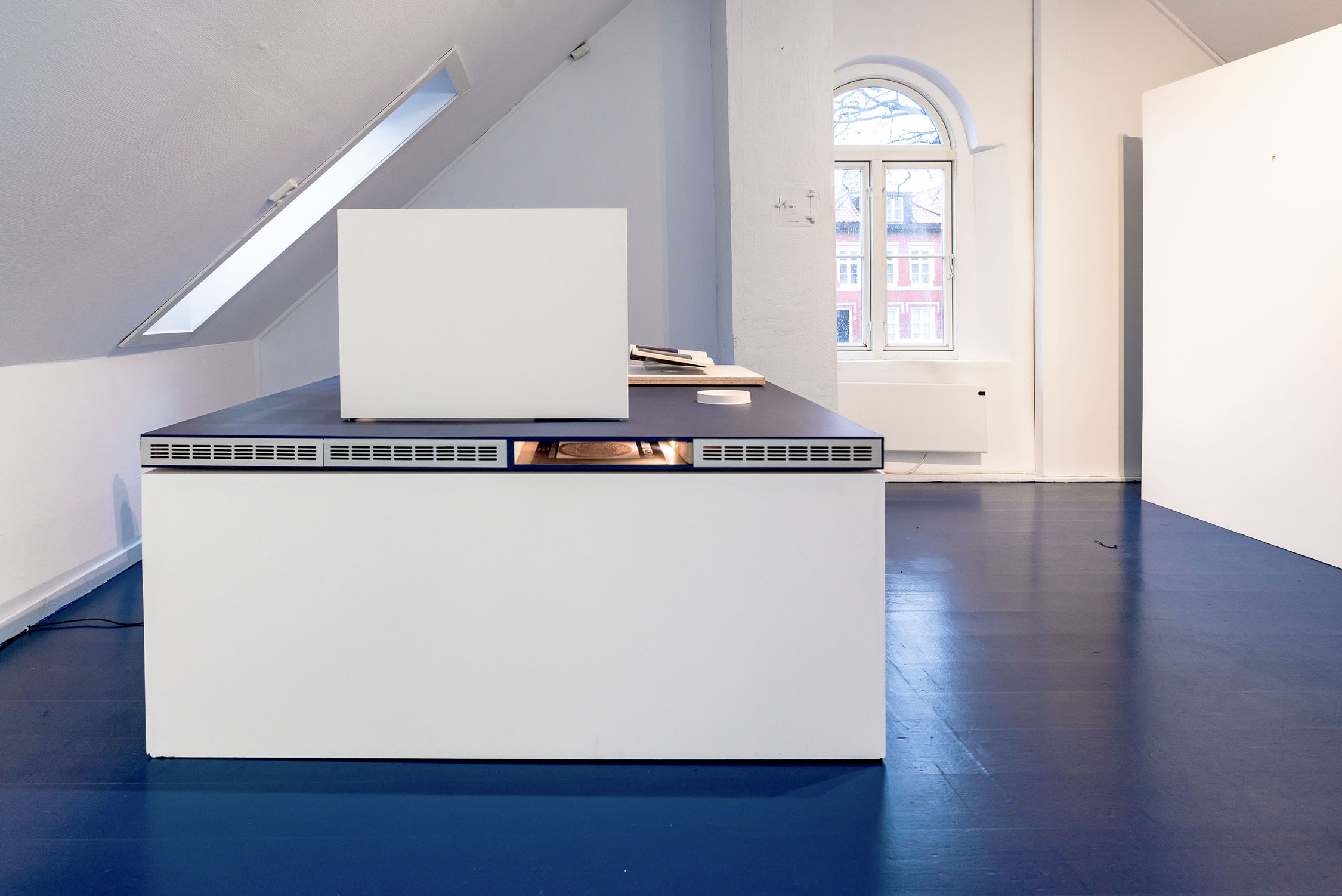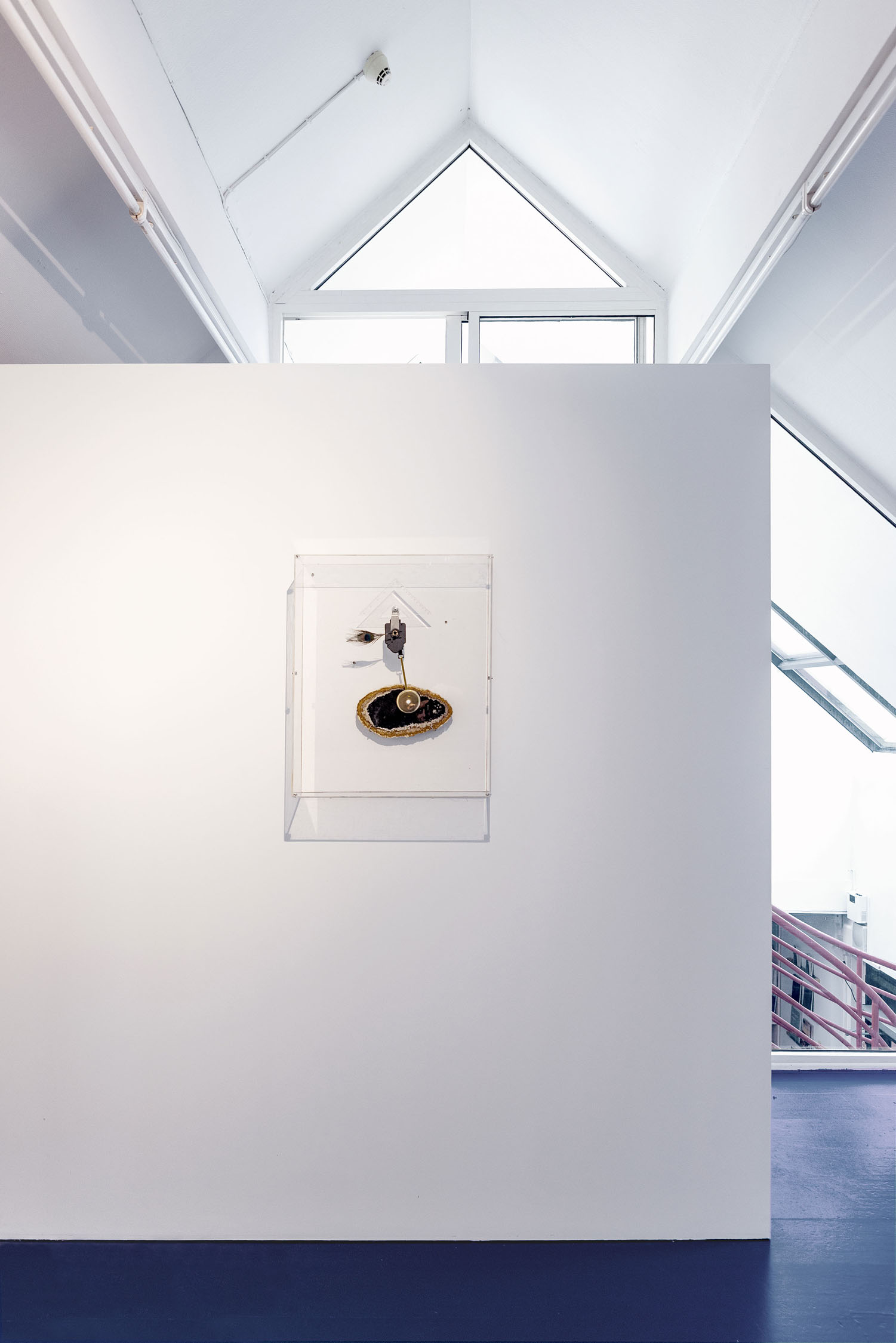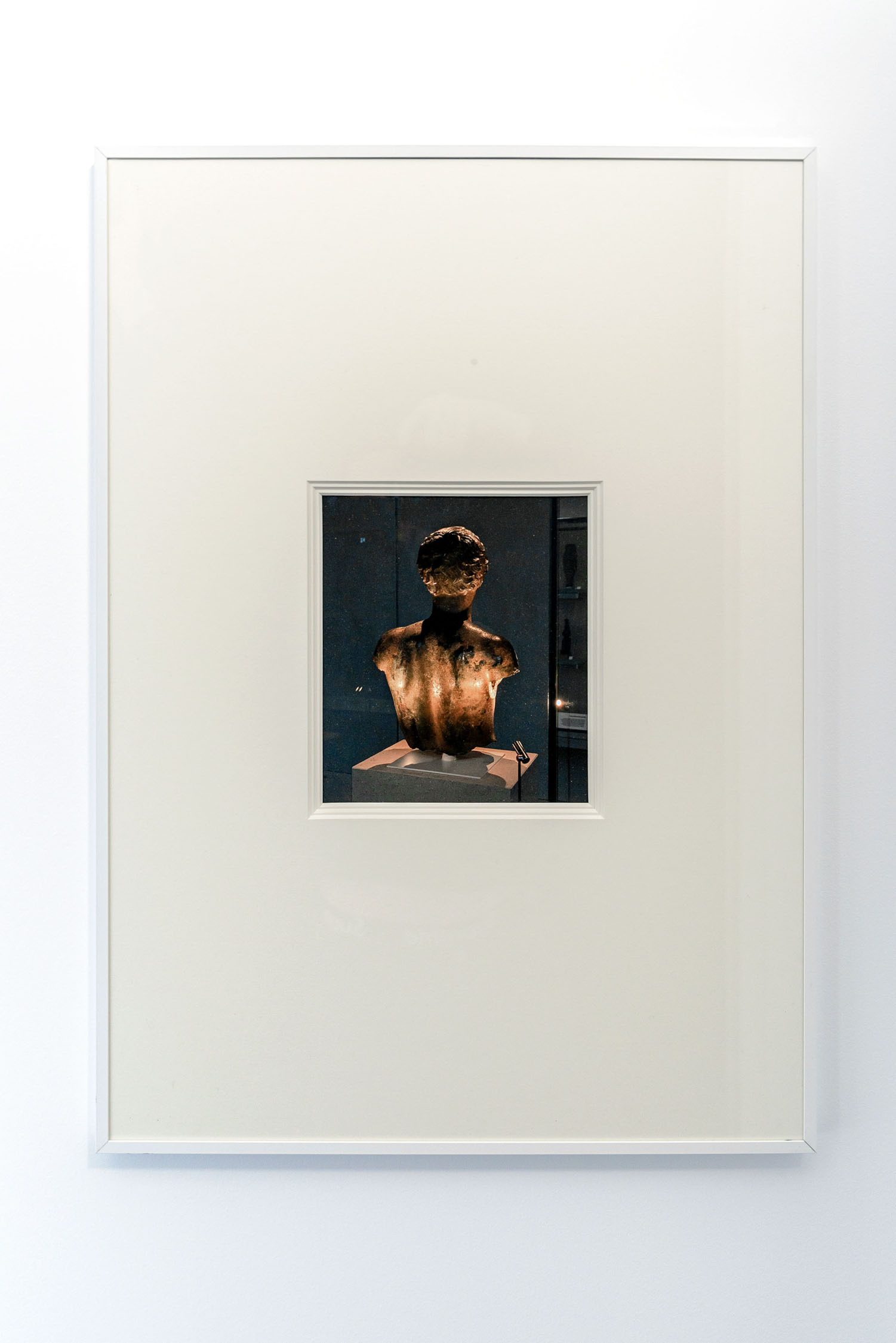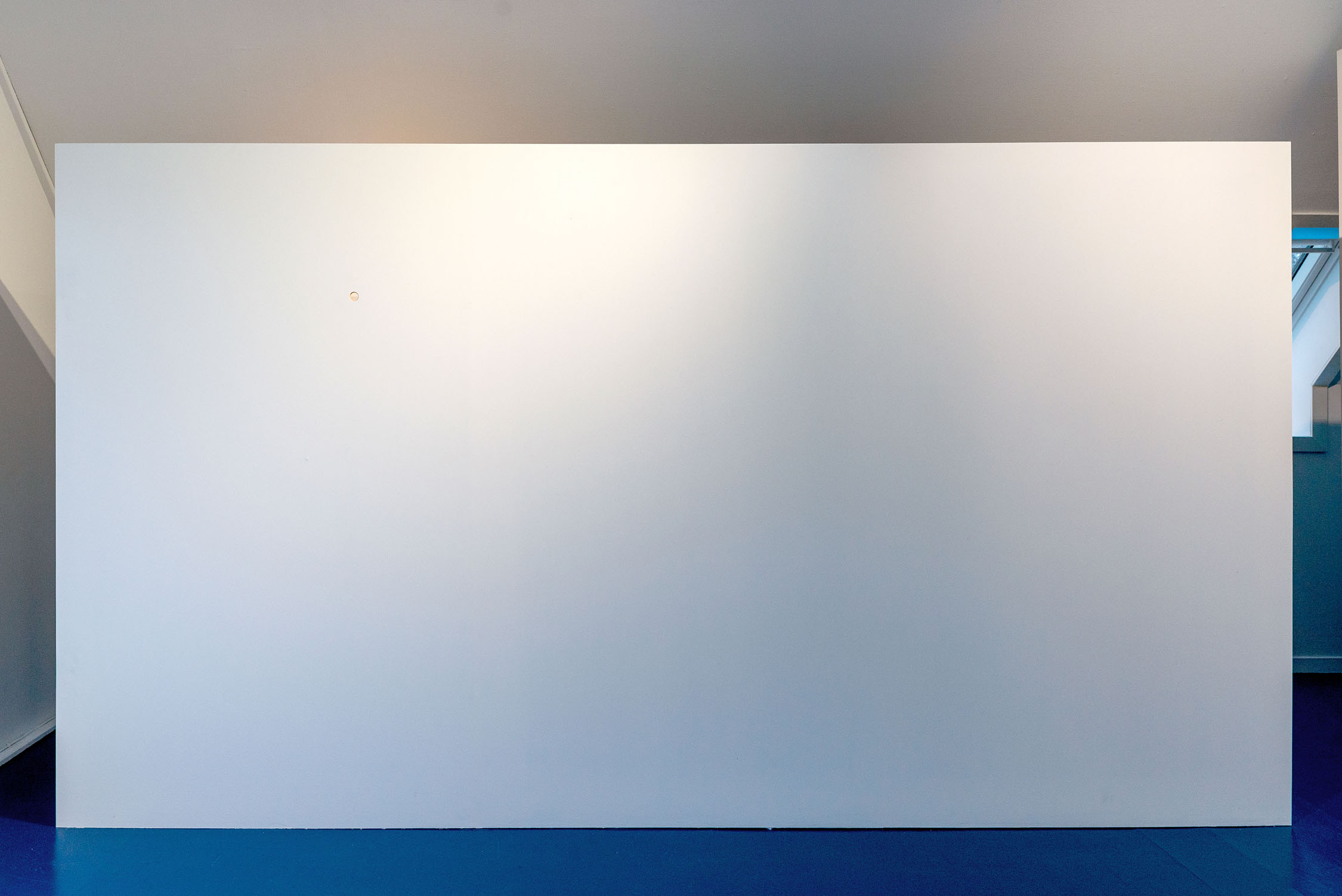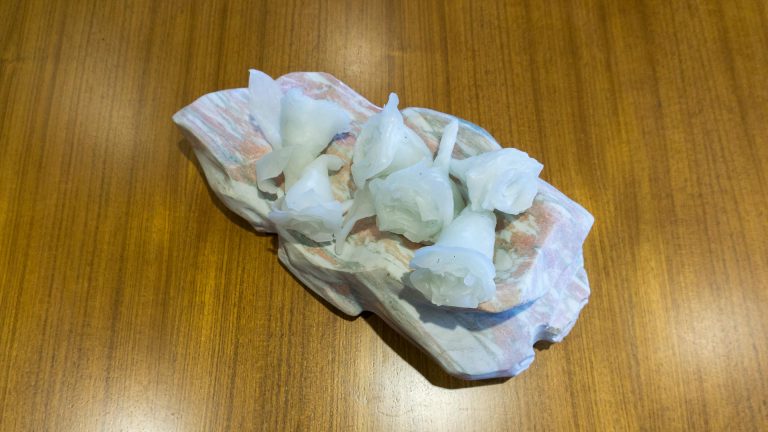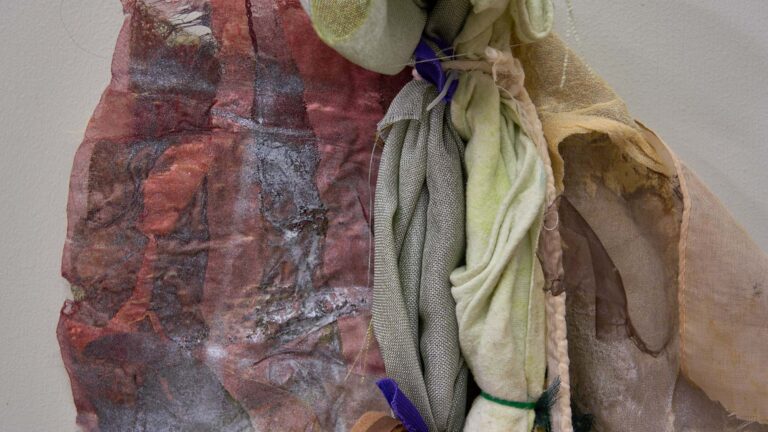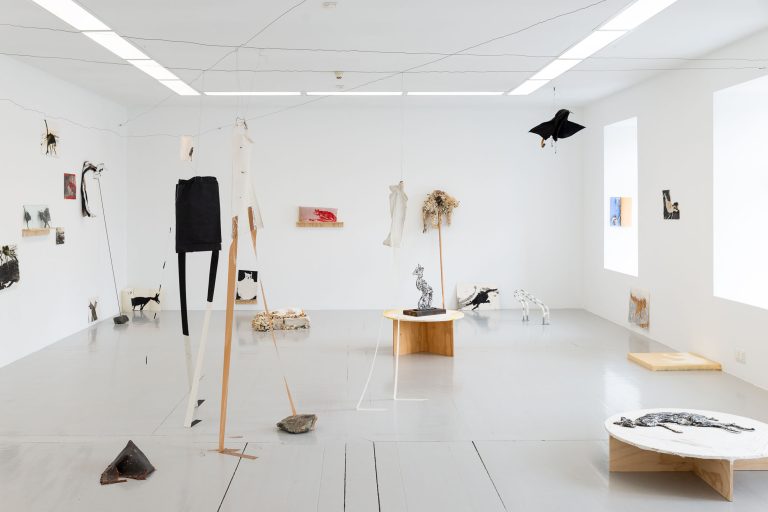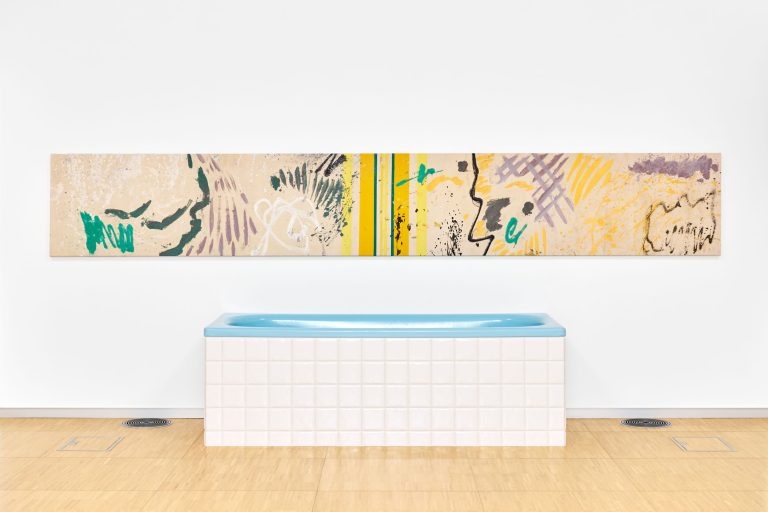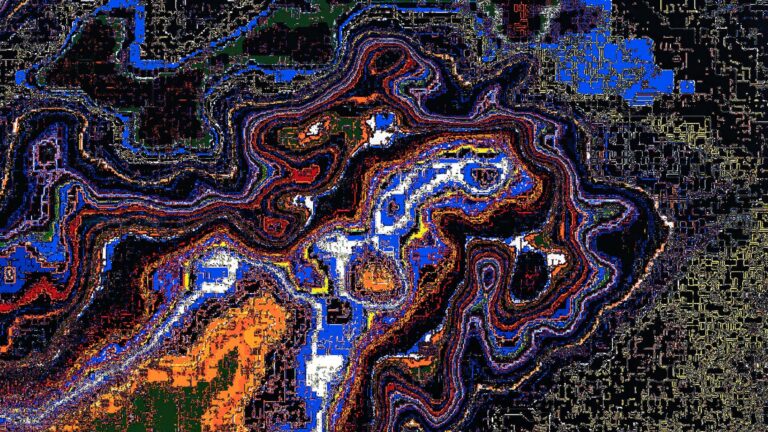The river Lethe, in Greek Mythology, is one of three rivers that lead to the Underworld.1 Drinking from its waters induces forgetfulness – a ritual act transitioning mortals from the world of the living to the world of the dead, preparing them for reincarnation. It is a river of mythic passage, of alchemy.
The Underworld can be interpreted as both a physical and psychic realm: a realm of the subconscious, where symbols are conjured. Unfolding as a threshold between worlds, Alex Hamish Millar’s Descent of Apollo can be seen as a meditation on the unconscious, not just as a place or function of forgetting, but a space immanent to consciousness and alive with possibility. It is an exhibition of concealment, amnesia, and metamorphosis—a passage to the ‘underland’ of the soul.
Drawing from religious, mythological, and occult symbolism, Millar constructs assemblages that flicker between revelation and obscurity, presence and absence, memory and the unseen. His sculptures in Descent of Apollo incorporate machine parts, plastic displays, petrified wood, mirrored surfaces, printed imagery, and personal possessions, alongside a figurine of Apollo.2 They are arranged to highlight uncanny similarities in texture, colour, and form, and to speculate on their purpose and symbolic meaning.
Nodding to contemporary philosopher Timothy Morton’s notion of magic – that it is the “withdrawal of objects from total comprehension being the very condition of magic” – Millar is interested in the erotic and the eerie qualities that appear in the objects he works with. Eroticism, like the eerie, thrives on partial concealment: to withhold is to seduce. In the gaps between knowing and unknowing, meaning is suspended, leaving room for the unsettled and spectral.
With works that borrow from the visual language of archives and museum displays, Descent of Apollo marks the second project as part of RUMOURS & MURMURS: An Archive Project. Rather than focusing on specific projects or objects in Hordaland Kunstsenter’s archive, Millar is interested in the conceptual framework of archives. To him, the archive is not a fixed repository of knowledge but rather something mutable—where objects, like memories, are unstable; subject to erosion and reinterpretation. Millar’s exhibition can be seen as a prompt to read the archive like a dream: a fractured space where objects transcend their immediate form, their meaning always shifting. Like the river Lethe, it suggests forgetting is not merely loss but metamorphosis too.
ALEX HAMISH MILLAR is a Scottish artist based in Bergen. His artistic practice includes installation, assemblage sculpture that examine how we relate to technology and the natural environment. Inspired by religious iconology, mythology and occult symbolism, Millar uses assemblage sculpture to create unconventional associations that challenge typical ideas of nature, cultural value and history.
Millar holds a bachelor’s in fine art from The Glasgow School of Art and a master’s in fine art from The Academy of Art (KMD), University of Bergen. Recent solo exhibitions include, Riddle of the Sphinx in November 2024 at Nonneseter Chapel, Bergen and Revelation Engine at BLOKK project space, Bergen, in May 2024. In October 2023 he curated the writing and performance project, Feral Tongues, including artists Ananda Serné, Hamid Waheed, and gentian rhosa.
RUBY ELEFTHERIOTIS is a Greek-Scottish curator and writer currently based in Bergen, Norway. She holds an MA in Art History and Film Studies from the University of St Andrews, and an MLitt in Curatorial Practice (Contemporary Art) from the Glasgow School of Art.
In her curatorial practice, Eleftheriotis explores liminal spaces and the porosity within environments through site-embedded readings of place. Her work is driven by questions of how time is woven together, how spaces can be co-inhabited, and how collective learning methods can emerge from a place of curiosity. Eleftheriotis currently co-runs aerial, a small studio and project space in Bergen dedicated to facilitating socially engaged practices and programming.
Descent of Apollo is part of RUMOURS & MURMURS: An Archive Project – a project initiated by curator and writer Ruby Eleftheriotis in collaboration with Hordaland Kunstsenter. This programme invites Bergen-based artists to explore HKS’s public archives, resulting in an solo exhibition that exists in relation to the archives. Millar’s exhibition marks the second round of this project, the first one being We Would Be Millionaires If We Could Sell Dust by Eleni Ieremia, shown in 2024.
The exhibition is supported by Kulturdirektoratet and Bergen Kommune.

